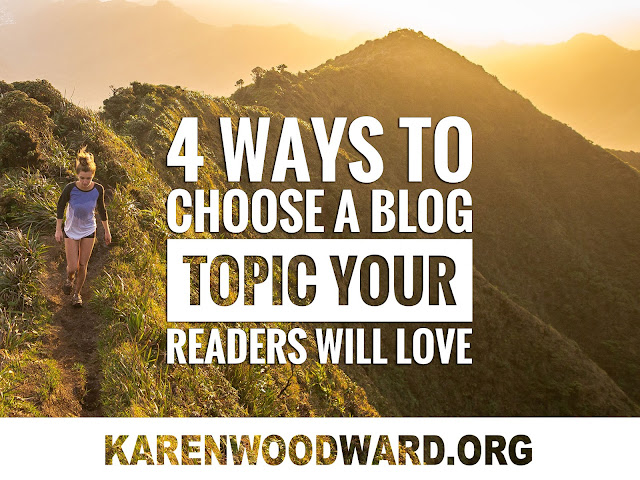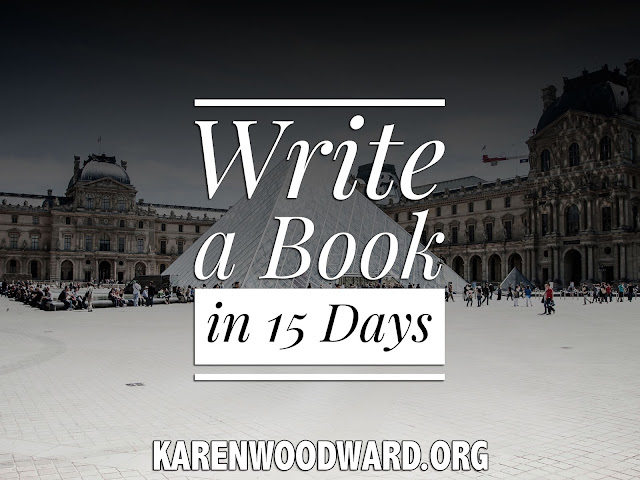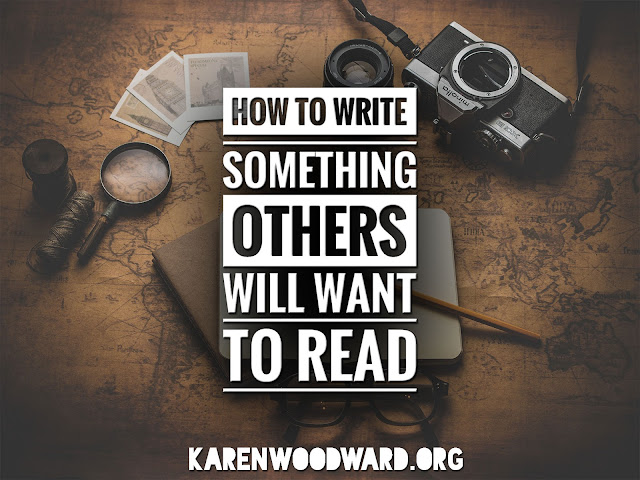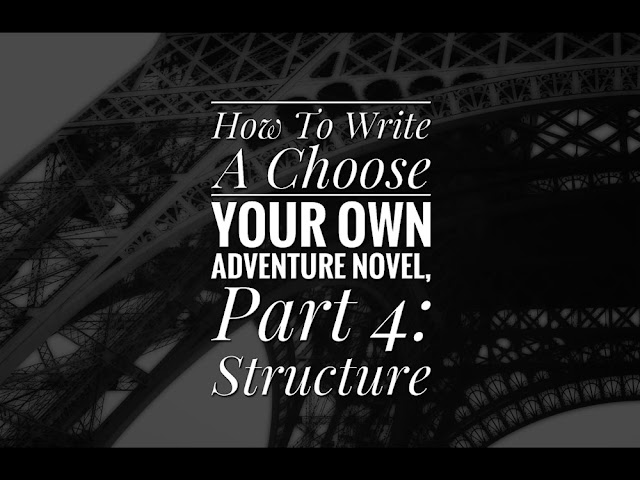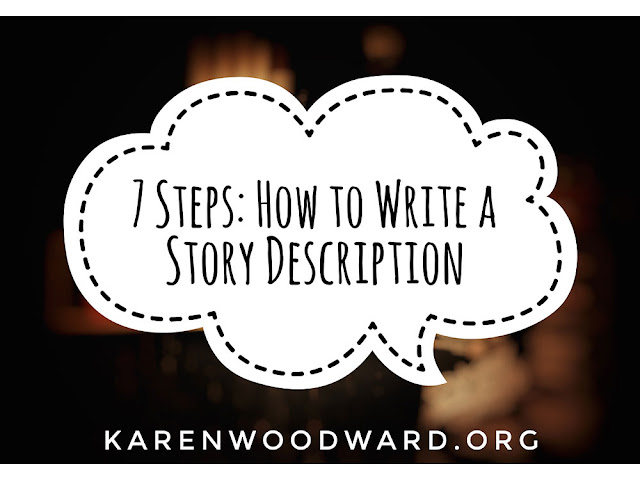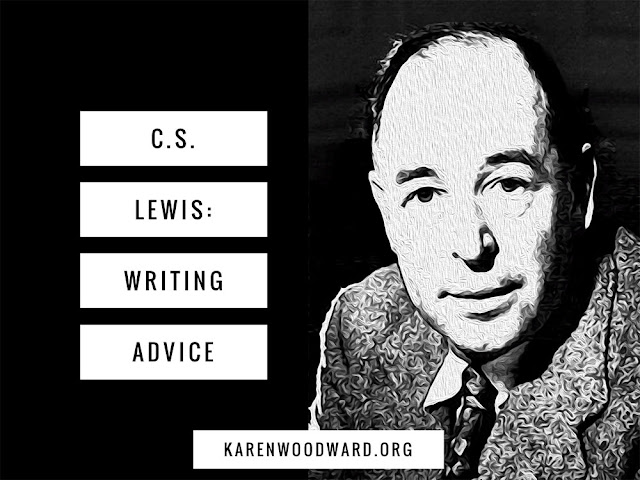One of the most difficult things about blogging is deciding exactly what to blog about. To be honest, I think picking a topic is something of a dark art. For years, it was a source of agony but then I developed a few strategies.
I’ll confess that I was stumped about what to write about today (it was difficult to rip myself away from working on my book!), but instead of going through this process myself—which I do on a regular basis—I thought I’d share the process itself.
I find that, often, creativity needs a nudge. Like an oyster needs a spec of sand around which to form a beautiful pearl, so writers often need inspiration to get their ideas flowing.
In any case, if I don’t have a topic in mind to write about, then here’s how I choose one. But, before I get to that, let me show you what I affectionately think of as, ‘The Test.’
The Test
In order for a topic to get the green light it has to pass two checks:
A. Would my readers be passionate about this topic?
B. Am I passionate about this topic?
You are wildly interested in a topic but your readers? Not so much.
Let’s face it, if your readers aren’t interested in a particular topic then, even if you’ve written the most erudite article, why torment them? Do write the article, but publish in another venue!
You think your readers would love to read about a certain topic but you’re not passionate about the topic.
I’ve had this happen. A few years ago I received several requests from readers to write about how to record an audiobook, and I thought that was a great idea for a blog, or even a series of blog posts.
But, for whatever reason, when I sat down to write the darn article it felt like I was trying to eat sawdust! I had to force myself to pick up and move the pen and the time stretched on and on and on and ... well, you get the idea. (I did eventually write the post, and I enjoyed doing it! Often our muses just need time to figure out how to make a topic our own.)
Sometimes a topic will sound great—perfect!—but you are so profoundly uninspired by it that it would take you ages to write it. That’s not making efficient use of your time. There are many topics that will inspire both you and your readers. Write about those and be happy! ;)
1. Podcasts.
Here’s what I do: As I’ve mentioned before (see: 6 Inspirational and Informative Writing Podcasts), I love listening to podcasts! And quite a few of my favorites are about writing.
One thing I do when I’m looking for topics my readers might love is to go to the podcast’s home on iTunes and sort the episodes by popularity so that the most popular podcast episodes are at the top. I then read the top 5 or 10 podcast titles and run them through The Test (see above).
2. Buzzsumo.com
What Buzzsumo does is show you a site’s most shared blog posts. Plug in a domain name and up will pop that particular site’s most shared blog posts. I use the free version and so can only see the 5 most popular posts, but that’s enough!
Select your five favorite sites and run their domain names through Buzzsumo. Look at the titles produced and Test them to see if any would be a good topic for you.
3. Your most popular Tweets.
One of the many nice things about Twitter is that it tells you which of your tweets and retweets were the most popular. This is a terrific way to see what topics your readers like to share!
4. Your most popular posts.
Practically any blogging platform will give you statistics; at the very least, it will tell you how many times a certain blog post has been viewed. If you’ve linked your blog to Google Analytics you’ll also be able to see, for example, how long visitors stay on the page. This will give you a more accurate idea about what viewers prefer, but if you don’t have Google Analytics, use whatever you have.
In what follows I’m going to talk about several ways you can get blog ideas from your own most popular posts.
a. Write a part two.
Many times I’ll come to the end of a blog post knowing there’s much more I could have written. When I go back and take a look at the most popular posts I ask myself, could I write a part two? You don’t have to call it part two, just blog about it and link back to the older post.
b. Give a detailed example.
You could give a detailed example that deals with a topic you wrote about in one of your more popular posts. For example, let’s say you wrote about how to write a Create Your Own Adventure story. You could create an outline and write the beginning of a small adventure then, for the blog post, share the materials and step through what you did to create them.
c. Write about the X most popular Y.
Let’s say your 3 most popular blog posts have to do with the same topic, say, “How to select a vacation spot snorkelers will enjoy.” Since you’ve got 3 posts about this as it is, maybe you don’t want to write a 4th! That’s okay, vary the kind of blog post. For example, “4 Snorkeling Paradises For Your Bucket List.”
d. Curate posts: your 5 favorite blog posts that week.
If you’re a blogger, chances are you read a number blogs. If a few posts stand out as being well written, then include them in a “best of the web” post.
For each article you use, give the title, the authors name and be sure to link back to the article itself (that’s important!)—in other words, attribute the article. This is also a good way of meeting other bloggers, I’ve had a number of folks whose material I’ve reviewed leave comments thanking me!
Those are my ideas, I’d love to hear yours! How do you choose a blog post?
Every post I pick something I love and recommend it. This serves two purposes. I want to share what I’ve loved with you, and, if you click the link and buy anything over at Amazon within the next 24 hours, Amazon puts a few cents in my tip jar at no cost to you. So, if you click the link, thank you! If not, that’s okay too. I’m thrilled and honored you’ve visited my blog and read my post.
Today I’m recommending a TV show: Lucifer.
Lucifer is filled with lighthearted irreverence, I find it a wonderful way to unwind. Rotten Tomatoes gives it a critical rating of 75% and an audience score of 89%. It's is based on the DC comic of the same name.
That’s it! I’ll talk to you on Wednesday. Till then, good writing!

